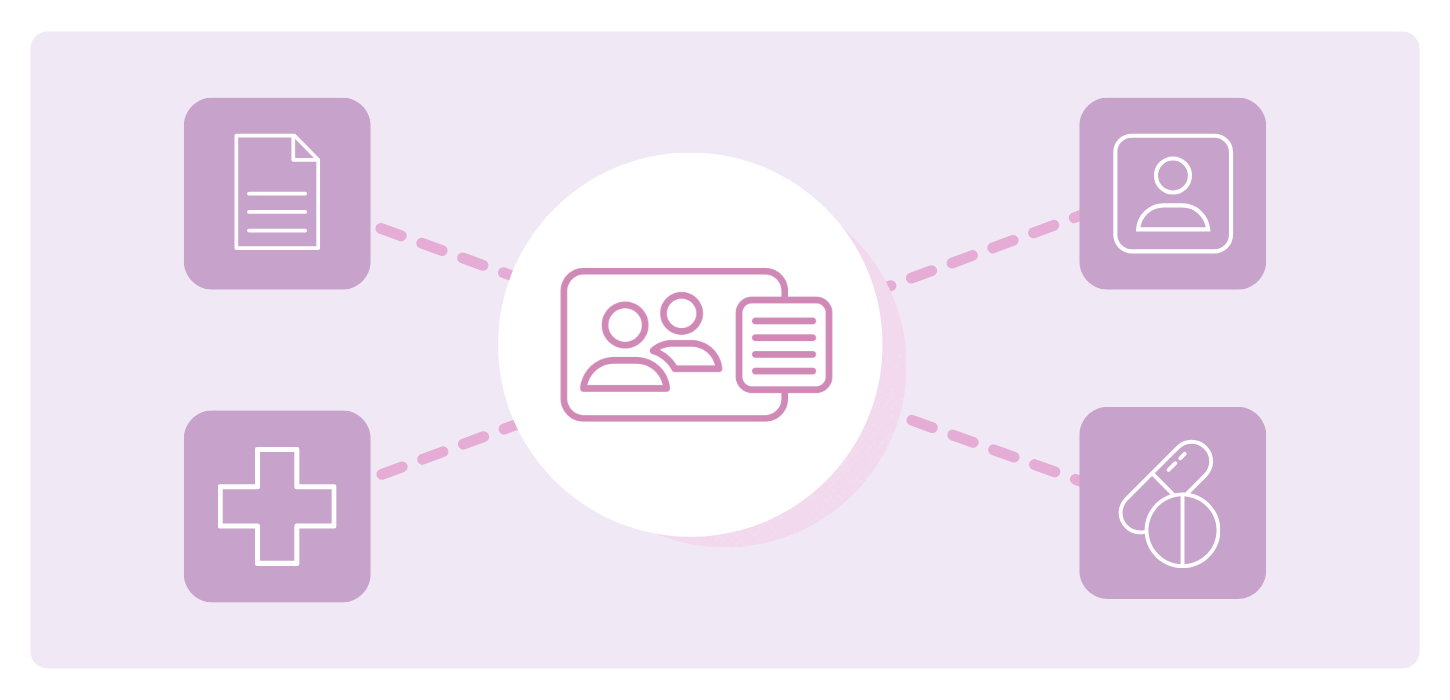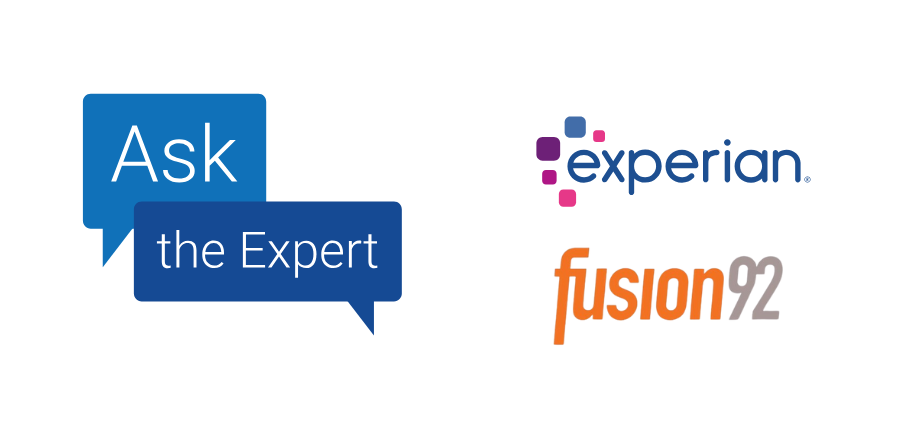At A Glance
Identity resolution unifies fragmented IDs into complete customer profiles, helping companies understand their audiences and deliver personalized, privacy-compliant experiences in a cookie-light world. With Experian’s AI-powered identity resolution solution, marketers gain the scale, accuracy, and compliance to compete while making marketing more human.In this article…
Every marketer has seen it: a customer browses reviews on a laptop, adds items to a cart on mobile, then “disappears.” In reality, they just likely switched devices or logged in with a different email. Identity resolution connects these scattered signals into a single profile so you never lose sight of the customer journey.
Identity resolution is what helps you keep track of customers who bounce around.
Connecting scattered signals into a single customer profile can help you deliver seamless experiences, meet strengthening privacy standards, turn first-party data into measurable results, and fuel better customer analytics.
See our identity resolution solution in action
What is identity resolution?
Identity resolution is the process of pulling together the different identifiers a customer uses and connecting them to a single profile. Without it, you’re left with an incomplete picture of the customer — like a cart tied to one email, an app login tied to another device, or a loyalty swipe that never links back to the same person.

Common identifiers include:
- Cookies: Short-lived browser data
- Emails: Plain-text and hashed
- Device IDs: Mobile advertising IDs (MAIDs) or app-based identifiers
- Loyalty IDs: Program numbers that tie online and offline activity
- Hashed PII: Personally identifiable information (PII) encrypted for privacy
Ultimately, identity resolution can help you recognize the same customer wherever they engage.
Why does identity resolution matter now?
Marketers face incomplete views, data silos, privacy regulations, and shrinking visibility:
- Rising consumer expectations: People want seamless, personalized journeys across touchpoints.
- Privacy-first environment: Consumer privacy legislation (like the GDPR, CCPA, GLBA, FCRA, and new state laws) makes compliance non-negotiable.
- Signal loss: The decline of cookies, MAIDs, and walled gardens are pushing brands toward first-party data.
Experian utilizes AI and machine learning to fill these gaps, predict behaviors, and connect signals across devices — providing marketers with a clear, privacy-safe view of their customers, even when traditional identifiers are missing.
In this environment, identity resolution matters because it gives marketers a way to deliver seamless, personalized customer experiences and engage audiences effectively while respecting their privacy. It’s the basis for turning consented first-party data into measurable marketing outcomes without sacrificing trust.
Why is identity resolution critical in a privacy-first world?
Even as cookies linger, marketers have already shifted their strategies to rely on first-party data, where choice and transparency are the baseline expectation. At Experian, our long history as a regulated data steward makes us a uniquely capable and trusted partner for managing modern compliance expectations. Our identity resolution solutions maximize the value of permission-based data while meeting consumer demand for privacy, personalization, and control.
Struggling with scattered customer data? Experian makes identity resolution seamless
How does identity resolution help brands?
Identity resolution turns fragmented signals into unified profiles that drive personalization, efficiency, and compliance. Here’s how it creates measurable business impact.
Creates a unified customer view
One of the biggest advantages of identity resolution is the ability to integrate data from loyalty programs, point-of-sale (POS) systems, customer relationship management (CRM) platforms, web analytics, and offline sources into a single, comprehensive profile. Experian strengthens identity resolution with AI-driven clustering models that resolve household and individual identities across billions of signals with greater accuracy.

With a clearer picture of each customer, brands see higher match rates and larger addressable audiences, which translates to more substantial reach and better return on ad spend (ROAS).
Enables better personalization
Customers constantly switch devices, update their information, and change preferences. Experian makes it easier to keep pace with these changes through frequent data enrichment and near-real-time identity resolution via Activity Feed.
Combined with our long-standing use of AI and machine learning, this approach ensures shifting behaviors are captured quickly, enabling timely personalization, and more responsive engagement.

With less delay from data to action, the result is faster response times and higher conversion rates.
Improves the customer experience
Customers notice when brands deliver relevant ads and contextual content across every channel. Consistency matters! But consistency doesn’t just happen on its own; it comes from identity resolution, which keeps the customer journey connected.

As brands maintain continuity, they build trust, strengthen engagement, and increase customer lifetime value.
Drives better marketing ROI
Not every profile is valuable. Identity resolution helps marketers identify the highest-value audiences and reduce wasted spend.

That efficiency leads to lower CPA and a higher overall ROI across campaigns.
The power of modeling from a stronger foundation
When you have a unified customer view, your models are built on better data. That means you can find more people who look like your best customers, build more responsive audience segments, and target with greater accuracy. This foundation can lead to better spending, more relevant campaigns, and a higher ROI.
Maintains privacy compliance
With GLBA/FCRA-grade standards and consumer choice mechanisms like opt-outs and data correction, you can protect your brand while maintaining personalization — without compromising legal or ethical safeguards.

What are some identity resolution use cases and examples?
Every industry faces its own unique identity challenges, but identity resolution is the common thread that turns scattered data into connected experiences. Let’s break down how companies in different verticals are putting it to work (and the kinds of results they’re seeing).
Retail and e-commerce
Shoppers bounce between websites, carts, and checkout lines, leaving behind scattered signals in the process. In retail, identity resolution bridges the gap between online and in-store experiences by matching online carts with loyalty swipes or connecting connected TV (CTV) exposure to in-store sales. This means fewer silos, better targeting, and more personalized offers wherever people shop.

Our 2025 Digital trends and predictions report calls out that omnichannel experiences aren’t optional anymore. With CTV and social dominating spend, brands need identity resolution to cut through silos and build a complete view of customer behavior.
Financial services
In financial services, identity resolution makes it possible to deliver personalized, compliant offers like refinancing options for likely mortgage switchers or the right rewards card for frequent spenders.
Our partnership with FMCG Direct to create Consumer Financial Insights® and Financial Personalities® segments helps banks, insurers, and lenders understand behaviors — such as credit card use, deposit balances, and investment habits — without exposing sensitive details.
Read more below about how our financial audiences enable privacy-safe personalization.
Travel and hospitality
Travel decisions aren’t always planned out in advance. Many bookings happen spur-of-the-moment, which is why real-time identity resolution is so powerful; it keeps the journey seamless when travelers jump from phone to laptop to tablet and presents relevant offers right as decisions are being made.
Windstar Cruises put this information into action with Experian’s identity graph to connect digital interactions with actual bookings, which drove 6,500+ reservations and $20 million in revenue.
Media and TV
Viewers tend to hop around between linear TV, streaming apps, and social feeds. And without identity resolution, every screen looks like a different person. Marketers can accurately plan, activate, and measure campaigns by unifying viewing behaviors into one ID with Experian’s AI-powered identity graph.

Optimum Media tackled its multiscreen challenge by partnering with Experian for identity solutions. Layering our audience insights and our AI-driven Digital Graph onto their subscriber data, they were able to connect the dots across channels, reach the right households, and measure results instead of just impressions. In the end, they finally got a clear view of what works across every screen.
Curious how identity resolution can power your customer analytics? We can walk you through it.
Healthcare and pharma
Healthcare marketers can’t afford slip-ups with HIPAA regulations. Identity resolution makes it possible to engage the right patients and providers with de-identified audiences rather than third-party cookies.

At Experian, AI and machine learning have always been part of how we power identity resolution. In healthcare, that means using AI-enhanced modeling to connect de-identified clinical and claims data with lifestyle insights. The result is a more comprehensive picture of the patient journey that helps close care gaps, reduce wasted spending, and improve outcomes.
By working with partners like Komodo, PurpleLab, and Health Union, we make it possible to activate campaigns at scale that boost engagement and adherence while keeping patient privacy front and center:
- Komodo Health enriches our identity graph with insights from millions of de-identified patient journeys plus lifestyle data, giving brands a fuller view of where care gaps exist and how to close them.
- PurpleLab connects real-world clinical and claims data to Experian’s platform, letting advertisers activate HIPAA-compliant audiences across CTV, mobile, and social with the ability to measure real outcomes like prescription lift and provider engagement.
- Health Union contributes a data set built from 50 million+ patient IDs and 44 billion+ patient-reported data points. Combined with our identity and modeling capabilities, this expands match rates and unlocks up to 76% net-new reach, so campaigns reach patients and caregivers in critical health moments.
As a result, healthcare brands can launch campaigns that are privacy-first, highly targeted, and proven to drive meaningful impact.
Audio
People use audio while commuting, working out, and even folding laundry. It can be one of the hardest channels to track because of how frequently listeners switch between apps, stations, and devices.

Experian’s identity resolution partnerships with Audacy and DAX change the game:
- Audacy helps tie scattered listening into a single view, so advertisers can follow audiences across devices and keep ads relevant in the moment.
- DAX pairs Experian’s 2,400+ syndicated audiences with its audio network, enabling brands to target precisely and launch impactful campaigns at scale.
These partnerships turn audio into an accurate channel where ads feel personal, privacy-safe, and measurable.
Gaming
Gamers don’t stick to one platform. Player data gets scattered across mobile, console, and PC, so it’s tough to keep track of individuals. Experian helps stitch those signals together so publishers can finally see the whole picture, personalize gameplay, and keep players coming back.
With enriched profiles, publishers can deliver offers that resonate and unlock fresh revenue by packaging high-value gaming audiences for advertisers outside the industry.
Unity, a leading gaming platform, is tapping into Experian’s syndicated audiences to gain player insights and help advertisers reach gamers across mobile, web, and CTV. For global publishers, unifying player data with Experian has driven higher engagement and stronger ad ROI.
How should I evaluate identity resolution providers?
When choosing an identity resolution partner, look for:
- Data scale and quality: The value of identity resolution depends on how complete and accurate the underlying data is. The right provider should bring together a wide range of identifiers from online and offline sources, maintaining high accuracy so your customer profiles are broad and reliable.
- Match accuracy and recency: The best partners also refresh their data regularly and can blend deterministic (exact, one-to-one matches) with probabilistic (pattern-based matches) methods. That way, you get the accuracy of “this email is definitely that customer” with the reach of “this device likely belongs to the same person.”
- Privacy and compliance readiness: Compliance can’t be an afterthought. Your identity partner should be ready for GLBA, FCRA, GDPR, CCPA, and the latest state-level rules with built-in tools for opt-outs, corrections, and deletions.
- Integration flexibility: A good provider fits into your world, not the other way around. Look for pre-built integrations with your customer data platform (CDP), demand-side platform (DSP), or marketing tech (MarTech) stack so you can get up and running without the heavy IT lift.
- Data analytics capabilities: You need proof that identity resolution drives ROI. Look for closed-loop measurement that ties unified IDs directly to campaign performance, so you can see what’s working and optimize with confidence.
How Experian enables enterprise-grade identity resolution
Experian delivers identity resolution at the scale, accuracy, and compliance required by the world’s largest enterprises. Our solutions are:
- Built on trust: Backed by 40+ years as a regulated data steward and rated #1 in data accuracy by Truthset, so you can act with confidence.
- Powered by our proprietary AI-enhanced identity graph: Combining breadth, accuracy, and recency across four billion identifiers, continuously refined by machine learning for maximum accuracy.
- Seamlessly connected: Pre-built data integration with leading CDPs, DSPs, and MarTech platforms for faster time to value.
- Always up to date: Frequent enrichment and near-real-time identity resolution through Activity Feed for timely personalization and more responsive customer engagement.
- Privacy-first by design: Compliance with GLBA, FCRA, and emerging state regulations baked in at every step, supported by rigorous partner vetting.
The bottom line
Identity resolution turns fragmented signals into connected, measurable, and compliant experiences. From retail to gaming, brands using it see stronger personalization, engagement, and ROI.
With Experian, you get the data, trust, and responsible AI innovation to make identity resolution work across every channel. Our approach uses AI to connect identities, predict behaviors, and deliver personalization that balances privacy with performance. If you’re ready to turn fragmented data into growth, now’s the time to start.
The world’s leading brands trust us to power identity resolution at scale. See how we can do the same for you.
Identity resolution FAQs
Deterministic uses exact identifiers (like an email) for accuracy, while probabilistic uses signals and algorithms to expand reach. Best-in-class providers usually combine both.
Identity resolution helps with personalization by unifying scattered signals into one profile. It reduces wasted spend and increases match rates, which means bigger addressable audiences and higher ROAS.
Yes. With first-party data and hashed PII, brands can still maintain addressability and personalization.
Retail, finance, travel, media, gaming, and audio all use identity resolution to personalize, attribute sales, and improve efficiency.
A customer data platform unifies the data you already own. Meanwhile, we add depth, scale, and higher match rates by layering in our identity graph and data enrichment.
Yes. Experian is GLBA/FCRA compliant, GDPR/CCPA ready, and supports consumer opt-outs and corrections to ensure responsible personalization.
Latest posts

The partnership between Experian and Fusion92 exemplifies how collaboration can deliver real marketing impact. This article explores the ways Fusion92 relies on Experian’s data to sharpen its audience targeting, streamline engagement across channels, and achieve measurable success. A need for unified audiences When Fusion92 set out to advance how their clients connect with precise audiences, they needed a data partner that could deliver comprehensive and actionable insights. Enter Experian. By using Experian’s marketing data and digital identity graph as a core source of data, Fusion92 built a solid foundation for their tools, DIOS (Data Input Output Solution), DAX (Data Advertising Exchange), and NoMi (pronounced “Know Me”). These powerful technologies enable Fusion92’s clients to control audiences more precisely, connect with the right people across optimal channels, avoid wasted impressions, and measure results with confidence. Why Fusion92 chose Experian Quality and reliability Experian’s commitment to data accuracy has earned the #1 ranking from Truthset, ensuring Fusion92’s campaigns are built on precise, actionable, and privacy compliant data that businesses can trust. Breadth and depth By offering demographic, behavioral, and channel preference data, Experian enables Fusion92 to have greater control over precision activation, empowering better results. Expert support Experian works closely with Fusion92 to provide tailored solutions and dependable expertise, adapting to meet the unique needs of their diverse clients. “Experian never really let me down in terms of data quality, data accuracy, and data reliability.”Dave Nugent, EVP of Data Science & Strategy, Fusion92 The power of teaming up Challenge A regional amusement park needed to increase membership renewal sales during peak season while reducing spend on households unlikely to visit. Solution Fusion92 combined the park’s first-party buyer file with Experian consumer data and custom geographic boundaries, built an advanced targeting model, and used Experian’s channel-preference insights to prioritize the media mix. The unified audience was then delivered omnichannel through Fusion92’s in-house proprietary DAX activation technology, with Experian’s identity graph supporting attribution. Result The marketing conversions beat the park’s stretch goal by 70%, confirming that accurate data and coordinated activation drive revenue lift. “It doesn’t matter if you’re a beginner or an expert. Experian will help you make the best use out of an incredible set of data assets.”Dave Nugent, EVP of Data Science & Strategy, Fusion92 Using marketing data to power omnichannel marketing Tools built by Fusion92 that meet client needs Fusion92’s suite of tools handles every essential phase of a campaign. DIOS starts by creating audience definitions and setting a foundation for strategy. Once these insights are established, DAX takes over, activating consistent, controlled engagement with tailored messaging. Detailed performance metrics throughout help optimize strategy along the way, ensuring campaigns remain impactful and cost efficient. DIOS in action DIOS eliminates guesswork, combining Experian’s data with advanced analytics to create precise audience models. This capability enables Fusion92 to define customer segments with accuracy, providing businesses with a roadmap to success from the outset. While currently in use as a managed service by Fusion92, a public-facing SaaS version is expected to be released in 2025. Activating every channel through DAX The campaign execution phase is pivotal, and DAX ensures smooth delivery and transparent measurement across channels. By incorporating Experian’s identity graph, DAX provides a clear picture of cross-channel behaviors and preferences, and how they impact business goals. This holistic approach enhances personalization, connecting online and offline interactions to create campaigns that resonate with consumers and drive ROI. Getting to know NoMi NoMi offers next-generation audience intelligence, empowering businesses with audience profiles built from behavioral insights, like transactional activity or in-market signals. This ensures that campaigns connect with people authentically and at scale. With NoMi, Fusion92 clients streamline targeting efforts, improving efficiency while reducing wasted spend. Thinking about your own transformation? Whether you’re tackling siloed activation, enhancing attribution models, or aiming for improved targeting, Experian’s data solutions can help amplify your efforts – just ask Fusion92. Explore how we can help you target smarter, engage better, and measure success confidently. Connect with an Experian representative today About our experts Dave Nugent, EVP of Data Science & Strategy, Fusion92 Dave Nugent, EVP of Data Science & Strategy at Fusion92, has over 27 years of experience in data-driven services, helping organizations better understand and target their audiences through predictive modeling and segmentation. Before joining Fusion92, he spent 11 years at American Spirit Corporation as VP of Data Solutions and co-founded Market Reason, where he secured a patent for an identity technology known as "identity solutions." Dave’s expertise bridges traditional, digital, and social advertising, offering innovative approaches to data utilization. He also shares his knowledge as a guest lecturer at the University of Chicago Booth School of Business. Crystal Jacques, VP of Enterprise Partnerships, Experian Crystal Jacques is the VP of Enterprise Partnerships, leading Experian's go-to-market team across all verticals. With over ten years of experience in the Identity space, Crystal brings a wealth of expertise to her role. She joined Experian in 2020 through the Tapad acquisition, following her successful stint as the head of Global Channel Partnerships for Adbrain, which The Trade Desk later acquired.

Audio platforms that overcome consumer identity challenges are winning new advertisers and driving higher ROAS. In this article, you’ll hear from leading audio platforms that are solving these challenges—and seeing results. Digital audio is evolving fast. What was once a niche channel of host-read sponsorships and direct buys is now a must-have in the modern media mix. Streaming platforms, podcasts, and digital radio are drawing more ad dollars thanks to audio’s ability to capture attention and connect with listeners. But with growth comes new pressure. Advertisers expect accuracy, scale, and to see results. At the same time, listeners want more relevant content and more personalized ad experiences. That’s where identity becomes essential. With Experian’s identity and audience solutions, audio platforms can: Bolster addressable audience targeting and personalization capabilities. Gain a comprehensive view of listeners’ digital identity to reach audiences across channels. Better understand consumer preferences, enabling advertisers to reach audiences with greater accuracy. Enhance the listening experience with more relevant content. Let’s break down the key challenges in audio—and how Experian can help solve them. Challenge 1: Anonymous listening limits addressability Most listening happens in environments where people aren’t logged in—via apps, smart speakers, and mobile devices. Without logged-in data, platforms struggle to know who’s listening and advertisers are unable to reach those anonymous listeners who don’t have an addressable ID. To overcome the identity gap in unauthenticated listening environments, leading audio platforms are turning to partners that connect fragmented signals—like device type, location, and behavioral patterns—to broader household and individual profiles. By using hashed emails and other alternative identifiers, platforms can begin to make anonymous sessions more addressable. This increase in addressability ensures the platform’s entire userbase can be reached, which leads to an increase in revenue. Experian’s solution Experian's identity spine, comprised of our Digital and Offline Graphs, helps you recognize listeners even when they’re outside your ecosystem. Platforms like Audacy are already leading the way. By integrating Experian’s Digital Graph, they’re gaining a more complete view of listeners’ digital identifiers—enhancing the experience across their app and website. With a better audience understanding, Audacy can deliver personalized content while helping advertisers reach specific groups with greater accuracy. Challenge 2: IP-based targeting falls short Audio has traditionally relied on IP addresses, but that’s no longer enough. A single IP could represent an entire household—or a public setting like a coffee shop. It’s not precise. Forward-thinking platforms are moving beyond IP-based targeting by integrating identity resolution technologies that combine household-level data with device-level intelligence. These solutions help distinguish between shared devices and individual listeners, allowing advertisers to serve more relevant messages without over-reliance on a single signal like an IP address. This layered approach improves precision—especially in dynamic listening environments like vehicles or communal spaces. Experian’s solution Our identity spine links home IPs to households, then connects them to specific devices and individuals. This helps platforms move beyond basic IPs and target real people based on accurate signals—even in shared listening environments like smart speakers and cars. We also help platforms and advertisers integrate alternative IDs—like Unified I.D. 2.0 (UID2)—into their programmatic audio campaigns. That means more reach, without compromising consumer trust. Challenge 3: Audio buying is fragmented From podcasts to streaming to radio, audio lacks consistency in how inventory is packaged and bought. It’s hard for advertisers to run scaled campaigns across channels—and harder still to measure performance. Plus, advertisers don’t think in silos—they think in strategies. If audio can’t connect to their display, connected TV (CTV), and social buys, it loses ground. What they need is a way to define audiences once and activate everywhere. To reduce friction in audio ad buying, platforms are investing in infrastructure that unifies audience insights across formats. By building a centralized view of the listener—regardless of whether they're tuning in via podcast, stream, or radio—publishers can offer advertisers consistent targeting parameters, clearer reporting, and better campaign orchestration. Identity graphs and audiences are playing a growing role in streamlining this complexity and unlocking scale. Experian’s solution Experian helps simplify audio buying. Experian audiences are built on top of our identity graph and are expanded to a deep set of digital identifiers, ensuring accuracy, scale and maximum addressability across channels. Platforms can blend their first-party data with advertiser data and our audiences—then deploy those audiences onsite or activate programmatically across open web and CTV. DAX is doing just that. DAX's partnership with Experian combines Experian’s 2,400+ audiences for targeting and activation with DAX’s innovative audio advertising approach. We’re helping advertisers connect with passionate and engaged listeners nationwide. "Through our partnership with Experian Marketing Services, advertisers can unlock deeper audience insights and execute more impactful digital audio campaigns. By combining our shared market presence, knowledge, and forward-thinking approach, we’re strengthening our digital audio network offering and delivering value to all our advertising partners." Brian Conlan, President of DAX United States In addition to integrating Experian’s Digital Graph, Audacy is also integrating Experian's syndicated audiences to unlock accurate insights like demographics, shopping behavior, and interests – providing listeners with a more personalized advertising experience and advertisers with a higher return on investment. “Historically, audio advertising lacked precise targeting capabilities, making it challenging for advertisers to reach specific audiences. By integrating our digital identity graph and syndicated audiences with Audacy’s platform, we’re transforming how advertisers connect with listeners. This collaboration enables more effective audience targeting and delivers personalized, impactful audio experiences across all channels.”Chris Feo, Chief Business Officer, Experian Privacy is non-negotiable Everything we do is privacy-forward by design. Backed by Experian’s Global Data Principles and decades as a regulated institution, we rigorously vet every data source to ensure compliance with all federal and state laws. Build an audio strategy that performs with Experian Your advertisers want more from their audio investments. With Experian, you can give it to them. We help you: Expand digital addressability to maximize reach for marketers and drive revenue growth for your platform. Create and activate addressable audiences across all channels. Enhance the listening experience with relevant content and personalized ads. Audio has always been a powerful way to connect. Now, it’s ready to perform. Let's connect Latest posts

When we launched our data marketplace earlier this year, we set out to transform how the industry discovers and activates privacy-safe audiences and maintains addressability across display, mobile, and connected TV (CTV). Yieldmo was one of the first adopters and their story speaks volumes about what’s possible when flexible tech meets premium data. Large retail brand boosts in-store traffic with Yieldmo and Experian Yieldmo, an advertising platform known for its inventive, AI-powered creative formats and privacy-first inventory, partnered with Experian to support a leading athletic retailer’s campaign focused on driving in-store traffic. The goal? Attract in-store shoppers likely to purchase from competitors, particularly during key sales windows. Using Experian’s Audience Engine platform, which includes our proprietary and third-party data marketplace, Yieldmo built a high-performing, self-serve targeting strategy that included both conquesting and in-store shopper segments. With the ability to easily combine Experian Audiences and Partner Audiences, like those from Alliant, Circana, Webbula, and Sports Innovation Lab, Yieldmo quickly built precise apparel and footwear audiences. Using Experian’s identity graphs in Audience Engine, Yieldmo increased cross-channel addressability to maximize campaign scale and impact. “Experian’s data marketplace in Audience Engine fills a critical gap, letting us quickly search by brand, build smarter conquest segments, and activate custom audiences fast. The platform is flexible and the support is hands-on and reliable.”Abby Littlejohn, Director of Sales Planning at Yieldmo With self-serve setup that cut down manual work, the ability to build highly tailored audiences, and expected lift in store visits, Experian helped the team achieve standout results. "We selected Experian as our primary third-party data partner based on contract ease, audience quality, and speed. Through Experian, we can find high-performing audiences from multiple providers that meet our client’s targeting objectives. We include Experian audience segments in 80% of formal RFP proposals and are in active discussions on how to optimize for future campaigns—making Experian a go-to partner for third-party targeting.”Nelson Montouchet, AVP, Strategic Partnerships, Yieldmo More data, more reach: Experian’s data marketplace fuels smarter targeting across ad platforms Today, just months after launch, Experian’s data marketplace is gaining traction across the ecosystem. Over 10 platforms, including leading supply-side platforms (SSPs) and TV platforms such as Madhive, OpenAP, and Optimum, are now actively utilizing our data marketplace to enhance their activation capabilities. As privacy rules tighten and many identity signals start to fade, a lot of activation platforms are finding it tougher to reach their audiences. This is where our data marketplace shines, with one of the most comprehensive identity graphs out there, 126 million households, 250 million individuals, and over four billion active digital IDs, we make it easy to activate audiences while keeping addressability high across channels. We preserve accuracy when scaling to digital IDs via our identity graphs since Experian is rooted in offline data, which provides better connections and smarter targeting. “Our long-standing partnership with Experian and breadth of Experian's data marketplace, combined with the interoperable, direct matching methodology of our Open Identity solution, make it possible for OpenAP to enable advertisers and agencies to use best-in-class data partners to build audiences with the highest fidelity and consistently reach audiences at scale wherever they are consuming content across premium video.”Chris LoRusso, Chief Business Officer at OpenAP Experian’s data marketplace has grown to include over 20 premium data providers, such as: “We’re thrilled to bring PlaceIQ’s privacy-first, visit-based audiences to Experian’s marketplace, giving brands quick and easy access to high-intent shoppers. From recent big-box customers to yoga-studio regulars, advertisers can add real-world relevance to campaigns across every channel.”Brian Bradtke, Head of Partner Development, Precisely PlaceIQ These partnerships bring unique value to platforms looking to understand and engage audiences more effectively, whether through physical location intelligence, sports and fandom insights, or behavioral intent signals. What’s next We're focused on expanding our data ecosystem and helping platforms and marketers turn fragmented data strategies into a unified competitive advantage. If Yieldmo’s story is any indication, this is just the beginning. Let’s connect and explore how Experian’s data marketplace can help you drive more revenue, scale your audience reach, and stay ahead of privacy shifts. Connect with us Latest posts